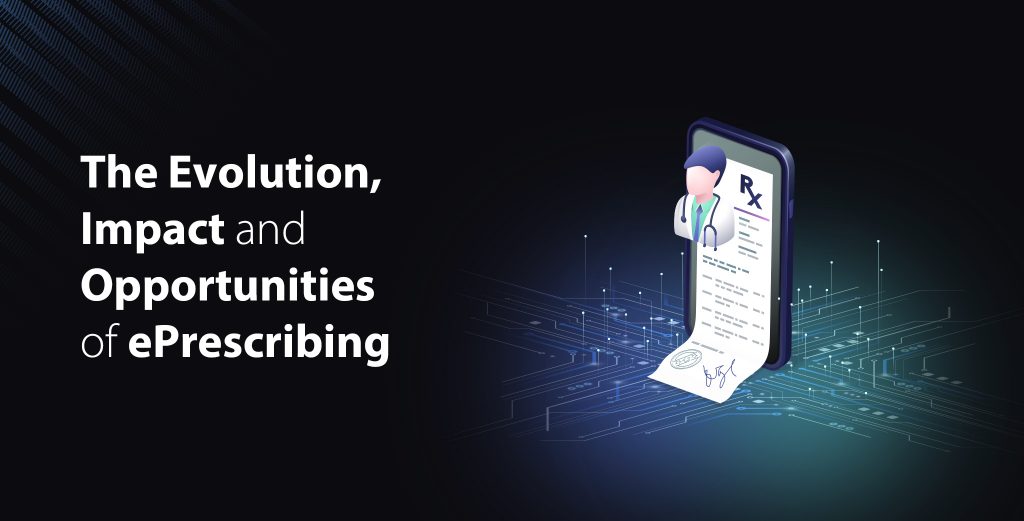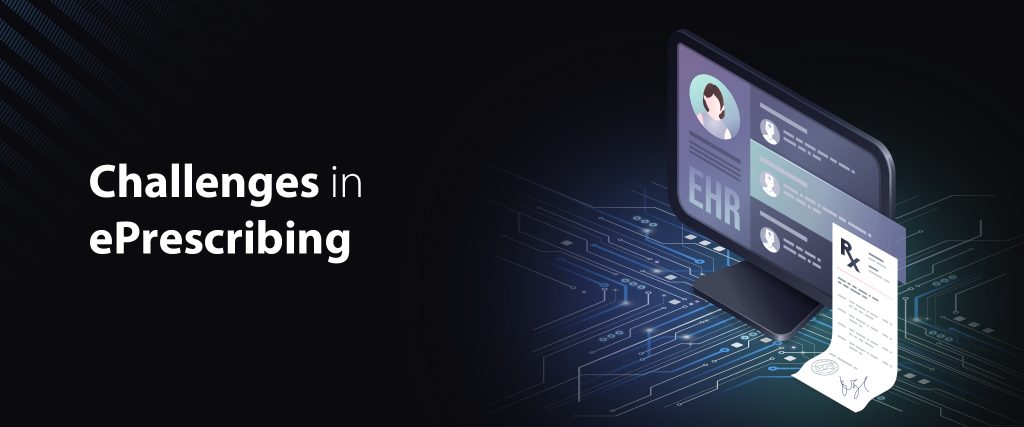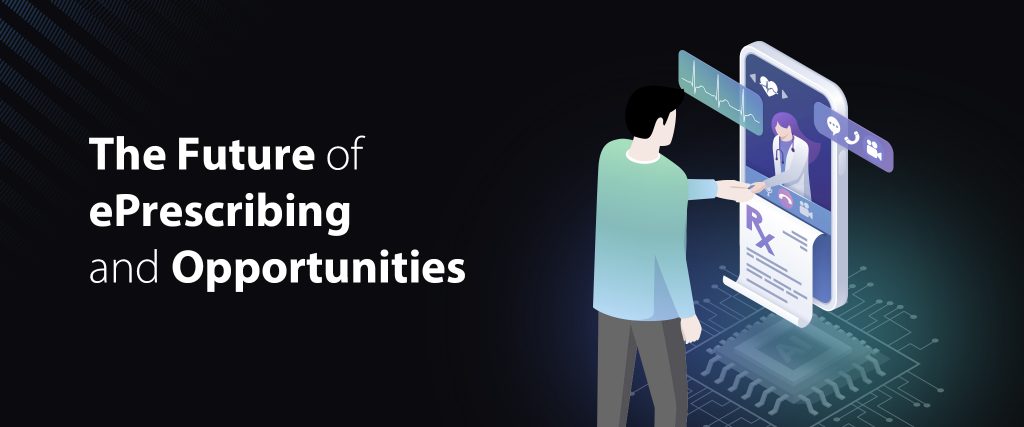
In the dynamic landscape of healthcare, technology’s role in patient care continues to grow, and one of the key drivers of this change is ePrescribing (eRx). ePrescribing, or electronic prescribing, is the
“computer-based generation, transmission, and filling of a medical prescription, replacing traditional paper and faxed prescriptions.”
It’s a digital transformation that was implemented to streamline the prescribing process and enhance patient safety and care.
Drawing from My Personal Experience
Reflecting on my own journey as a Physician and a Clinical Product Manager, I’ve had the opportunity to witness and contribute to the evolution of ePrescribing firsthand. I fondly remember the days of writing paper scripts in illegible, Latin shorthand, passing it to a patient and promptly forgetting about it. This today is frowned upon as fraught with potential errors from illegible handwriting and miscommunication. The rise of ePrescribing was branded as a significant turning point, bringing a new level of clarity, safety, and efficiency (or inefficiency?) to this critical aspect of patient care.
In this blog post, we’ll journey together through the evolution of ePrescribing, understanding its impact on healthcare and the opportunities it presents for the future.
Tracing the Evolution of ePrescribing
The journey of eRx began over two decades ago with the advent of the internet and digitization. Initially the concept was met with resistance – healthcare providers were accustomed to the traditional method of writing prescriptions, and transitioning to a digital platform required a significant change in mindset and practice. Also adding to the reluctance of physicians was that early CPOE (Computerized Provider Order Entry) systems were EVEN LESS user-friendly than they are today!
Shocking, I know since they are still pretty poor in the UX department.
Legislation Causing a Leap in Innovation
The turning point came in 2003 with the introduction of the Medicare Prescription Drug, Improvement, and Modernization Act. This legislation incentivized (see: $) the use of ePrescriptions and laid the groundwork for the later mandate of ePrescribing under the Medicare Part D program. Over the years, as ePrescribing systems became more sophisticated and integrated with other health information systems, their utility and efficiency improved. This progression was further propelled in 2010 when the Drug Enforcement Administration (DEA) ruled that prescriptions for controlled substances could be sent electronically! This requires the ePrescribing system to use the DEA Number of the prescriber as well as a “2 factor authentication” for each prescription.
The widespread adoption of ePrescribing, however, was cemented by the 21st Century Cures Act of 2016, which introduced the ‘Electronic Prescribing for Controlled Substances’ (EPCS) mandate. This landmark regulation required physicians to electronically prescribe at least 70 percent of their controlled substances for patients with Medicare Part D, except in cases where an exception or an approved waiver applies.
The Impact of ePrescribing: Driving Positive Change across The Entire Continuum of Care
ePrescribing has undeniably left a significant mark on the healthcare industry, with its effects rippling through to healthcare providers, pharmacists, and, most importantly, patients.
Automated Prescription Renewals Enabling Optimized Care
Healthcare providers are at the center of this transformation. The automation of prescription renewal requests and the ability to easily access a patient’s medication history through Electronic Health Records (EHRs) and Pharmacy Benefit Managers (PBMs) has been a game-changer. Real-time checks for drug interactions, allergies, and insurance formulary coverage are now possible, helping to optimize patient care.
Efficient Pharmacy Workflows Resulting in Safer Prescription Practices
For pharmacists, ePrescribing has eliminated the struggle with hard-to-read prescriptions, reducing the risk of dispensing errors. As a result, the prescription process has become more efficient, leading to shorter wait times and improved service. The method of prescription transmission is now secure and trackable, supposedly reducing the likelihood of prescription fraud.
Empowering Patients as Advocates of Their Own Health
Patients have directly experienced the benefits of ePrescribing, with conveniences like having medications ready upon arrival at the pharmacy and not worrying about losing paper prescriptions. Increased medication adherence and a reduced likelihood of medication errors and adverse drug events contribute to safer, more effective care.
While ePrescribing can be a valuable tool for improving the care continuum, it’s not without its hurdles. While ePrescribing has positively impacted healthcare, it has also presented a unique set of challenges which we’ll delve into in the next section.
Challenges in ePrescribing

ePrescribing has been a game-changer in the healthcare landscape, having a profound impact on healthcare providers, pharmacists, and patients. However, like any significant change, it also comes with its own set of challenges.
A Time-Intensive Activity
The first hurdle is the time investment required. There is no way to sugarcoat it: e-prescribing is a time-consuming process, especially when compared to the speed of writing a paper prescription. From typing in each detail to searching for the correct drug and dosage, the Route, the SIG, etc. the process is lengthy and cumbersome. This time constraint can be particularly frustrating in a busy clinic, where efficiency is paramount. Some doctors opt to leave this time-consuming process to their PA or Nurse, but that also introduces another point for miscommunication.
Poor Healthcare UX Plagues Usability
Secondly, the user experience of ePrescribing systems is just straight bad. The interfaces are repetitive and clunky, making it cumbersome for healthcare providers to navigate through the necessary steps. EHRs and other CPOE systems will lean on “regulatory” or “safety” if pushed to improve the UX.
Data Silos And Lack of Integration
Valuable patient information is in silos thus locking a patient into a large ecosystem (Kaiser Permanente for example). This is a business decision from insurance to health data to labs and medications. Even if interoperability can tackle this fairly well, the case has been made for users to own their data using Web3 tech, but there is no incentive for current powers to allow this.
Need for Better Security Protocols
Lastly, despite the enhanced security measures associated with ePrescribing, these systems are shockingly easy to defraud. I’ve personally seen Pill Mills operating with impunity, since no legal ramifications for the EHR as long as they adhere to the rules, unscrupulous folks just need to understand and manipulate these rules. Unfortunately today this seems to be the cost of doing business in the ePrescribing space.
While these challenges may seem daunting, they also provide opportunities for improvement and innovation! As we continue to refine and evolve ePrescribing systems, it’s crucial to address these issues to ensure that the benefits of ePrescribing outweigh the hurdles. I feel once these hurdles are cleared there will be a strong value proposition for prescribers, pharmacists, and patients.
The Future of ePrescribing and Opportunities

Financial Incentivization As The Way Forward
Practically, the only thing that will move the needle in a positive direction for the US Healthcare market is financial incentivization. Forget patient outcomes, evolving healthcare policies will dictate what opportunities will materialize and how implementation can improve some processes.
Streamlining ePrescribing with APIs
Even as I spoke of the challenges of ePrescribing as a time-intensive activity, we are seeing a few instances that cut down the prescription writing time a good deal. FDB offers a Common SIG API where you can view the most common directions for the selected medication along with percentages! For example, upon selecting Augmentin 1000mg, they can tell you immediately the most Common SIG is “1-0-1 x5d” 67% of the time!
Leveraging AI Integration for ePrescribing
Firstly, the integration of advanced technologies like Artificial Intelligence (AI) and Machine Learning (ML) can enhance the capabilities of ePrescribing systems. These technologies can help in predicting patient medication needs, personalizing medication recommendations, and identifying potential drug interactions or allergies more accurately. Personally, I would love it if we can get predictive text through something like GPT-4 and make filling the scripts out much faster – like 10x faster!
Focusing on Interoperability for Improved Efficiency
Secondly, there’s an opportunity to improve the interoperability of ePrescribing systems with other healthcare systems. Enhanced interoperability will ensure a smoother flow of information, enabling more coordinated and efficient care. This will also facilitate a more comprehensive view of the patient’s health status, leading to better clinical decision making.
Both as a Physician and Clinical Product Manager who has been part of this transformative journey, I am excited about these opportunities. While we have made significant strides in ePrescribing, there’s still a long way to go. The key lies in constant innovation, user feedback, and a commitment to improving patient care. As we continue to navigate the challenges and embrace the opportunities, we can shape a future where ePrescribing is actually a convenient tool of a patient-centered healthcare system, and not just a requirement to check off for regulatory reasons.


